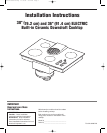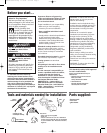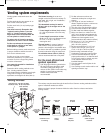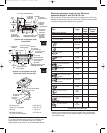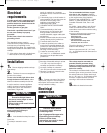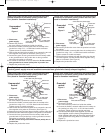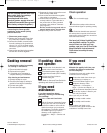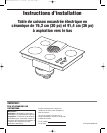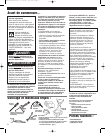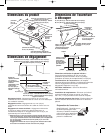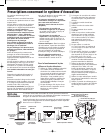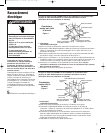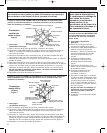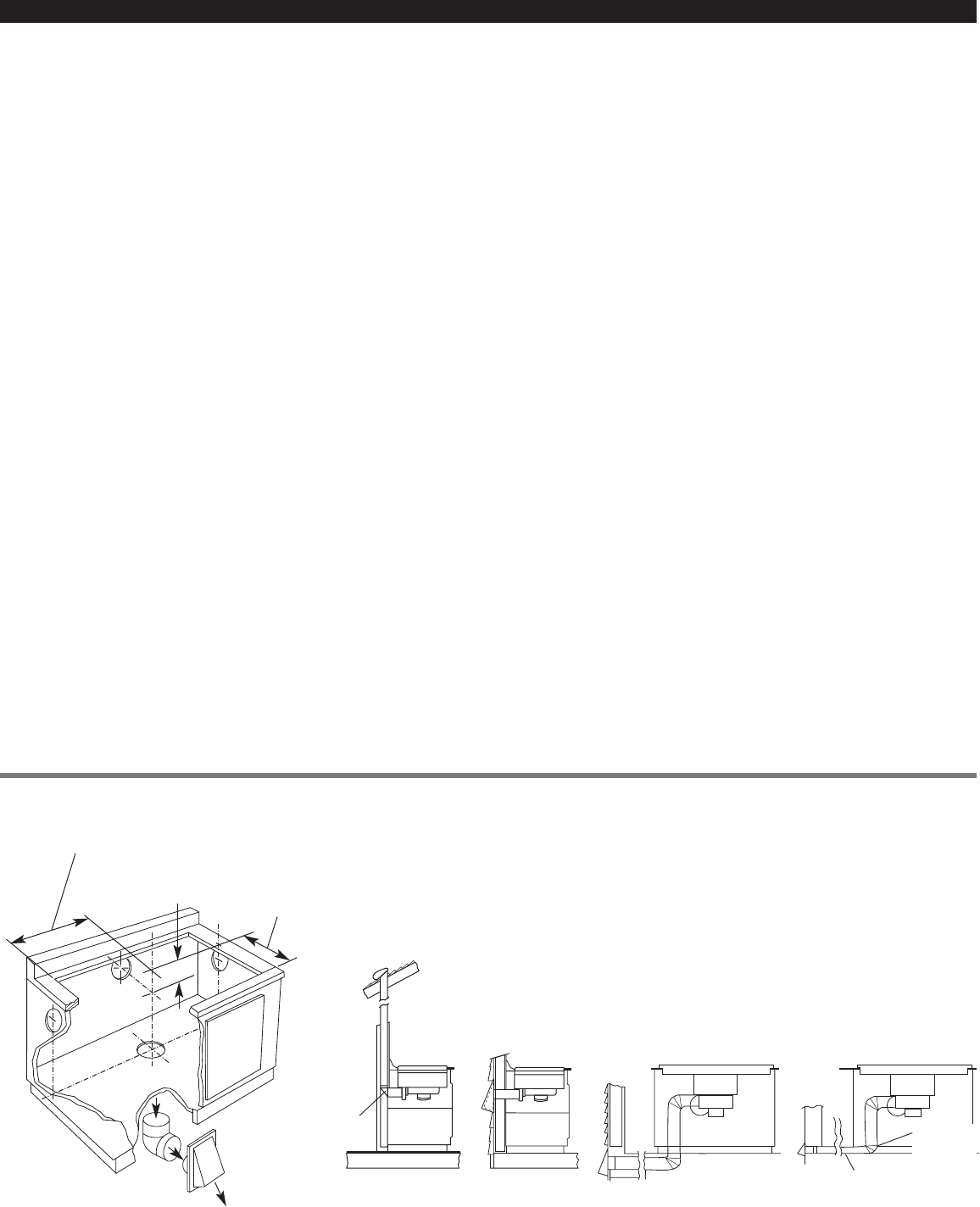
4
Venting system must terminate to the
outside.
Do Not terminate the vent system in an
attic or other enclosed space.
Do Not use 4-inch (10 cm) laundry-type
wall caps.
Use metal vent only. Exception: See
"optional venting under a concrete
slab", in "Venting methods" below.
Rigid metal vent is recommended. Do
not use plastic or metal foil vent.
To reduce risk of fire and to properly
exhaust air, be sure to vent air outside.
Do Not vent exhaust air into spaces
within walls or ceilings or into attics,
crawl spaces or garages.
Before making cutouts, make sure there
is proper clearance within the wall or
floor for the exhaust vent.
Do Not cut a joist or stud unless
absolutely necessary. If a joist or stud
must be cut, then a supporting frame
must be constructed.
Vent materials needed for installation
are not supplied.
Determine which venting method to use.
See “Venting methods,” below.
Next, determine the equivalent vent length
using chart on Page 5. The maximum
equivalent vent length is 60 feet (18.3 m).
For the most efficient and
quietest operation:
ࠜ
Use 26-gauge minimum galvanized or
25-gauge minimum aluminum metal
vent. Poor-quality pipe fittings can
reduce air flow. (Note: Local codes may
require a heavier-gauge material.)
Flexible metal vent is Not
recommended.
Venting system requirements
The cooktop may be vented through the wall or floor. Common venting methods and the
types of materials needed are shown.
Make sure there is proper clearance within the wall or floor for exhaust vent before
making cutouts.
17"
(43.2 cm)
9-5/8" (24.4 cm) - 30" (76.2 cm) model
13-5/16" (33.8 cm) - 36" (91.4 cm) model
9-3/4" (24.8 cm)
hole in rear or
side of cabinet
Venting methods
inside wall
cabinet
3-1/4" x 10"
(8.3 x 25.4 cm)
transition
elbow
3-1/4" x 10"
(8.3 x 25.4 cm)
transition
elbow
inside wall to roof
or overhang
outside wall
cabinet
directly
outside
peninsula
or island
peninsula
between
floor joists
cabinet toe space
to outside
The blower housing is set to vent
straight out the back from the cooktop. To
vent down, left or right, see “Installation,”
Step 2, Page 6.
This downdraft cooktop is rated at
60 feet (18.3 m) of straight vent or the
equivalent.
• If vent length is 10 feet (3 m) or less,
6" (15.2 cm) diameter round vent may
be used.
• If vent length is more than 10 feet
(3 m), use 6" (15.2 cm) diameter round
or 3-1/4" x 10" (8.3 x 25.4 cm)
rectangular vent.
Thermal breaks: In areas of extreme
cold weather, it may be necessary to
provide a short length of nonmetallic duct
as close to the wall as possible to prevent
thermal conduction along the metal vent.
For altitudes above 4,500 ft (1372 m),
reduce recommended vent run by 20%.
ࠜ
Do Not exhaust more than one
downdraft cooktop into a single vent
system.
ࠜ
The length of vent and number of
elbows should be kept to a minimum to
provide efficient performance.
ࠜ
The size of the vent should be uniform.
ࠜ
Use the fewest number of 90° elbows.
ࠜ
Do Not install two elbows together.
ࠜ
Make sure there is a minimum of 18"
(45.7 cm) of straight vent between the
elbows if more than one elbow is used.
(Elbows too close together cause
excess turbulence that reduces airflow.)
ࠜ
Do Not use a 5" (12.7 cm) elbow in a
6" (15.2 cm) or 3-1/4" x 10"
(8.3 x 25.4 cm) system.
ࠜ
Do Not reduce back to 5" (12.7 cm)
system after using 6" (15.2 cm) or
3-1/4" x 10" (8.3 x 25.4 cm) fittings.
ࠜ
Avoid forming handmade crimps.
Handmade crimps may restrict airflow.
ࠜ
Use the recommended vent caps for
proper performance. If an alternate wall
or roof cap is used, be certain cap size
is not reduced and that it has a
backdraft damper.
ࠜ
Use duct tape to seal all joints in the
vent system.
ࠜ
Use caulking to seal exterior wall or roof
opening around the cap.
YK20519/8285116 Eng 11/18/02 2:52 PM Page 4



